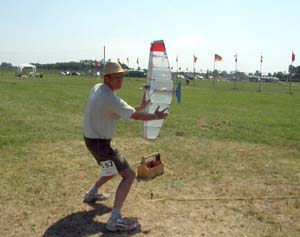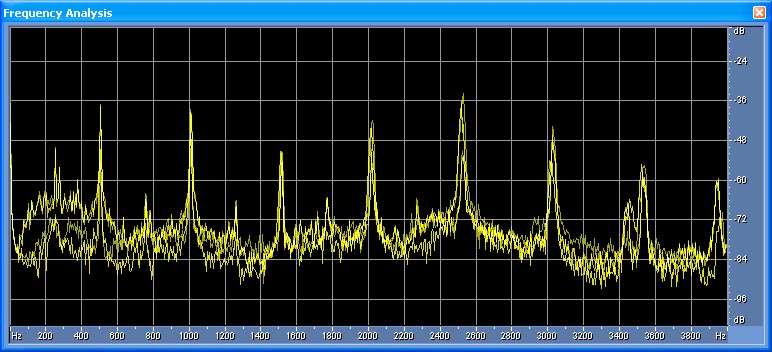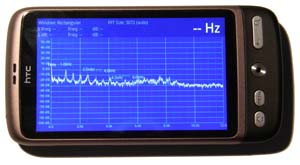F2D Noise Reduction
Frequencies analyses for F2D noise
First published: 21/7 2011 Last update: 29/1 2015
|
To get a better understanding of the problem with noise we need to know the power distribution in the frequency spectrum of the noise from engines.
It is not necessary to have a fancy spectrum analyzer to get some information on the noise from combat models. Using a video camera and a computer program it is actually possible to make a simple analyse of the noise. The quality of the microphone and the recording quality might be quite poor but still it is possible to gain some interesting information. At the world champs in Hungary last year I made some video recordings of a model with a running engine. Rudi Königshofer was running his AKM at 30,400 RPM without a muffler a we recorded it from different directions. By analysing the sound track from this recording in a simple analysing program it was possible to get a picture of the noise. |
 |
|

|
||
|
This graph is a combination of frequency analyses from 4 different directions of the model. First it is easy to see the harmonic frequencies. The most dominant frequencies seems to be the base frequency and the first harmonic (506 Hz and 1012 Hz). Some of the higher harmonics around 2000, 2500 and 3000 Hz are also quite strong in some directions. In general it is clear that most of the power in the noise is concentrated around the base frequency and its first 6-8 harmonics. An effective silencer must be able to reduce the sound at these dominant frequencies. If the engine was always running stable at a fixed speed it would be possible to optimize the silencer for these frequencies but a combat engine do actually vary a lot during a flight. The engine speed will change with the flying speed, weather, tank pressure, etc. These relative small variation in engine speed will give a similar variation in the dominant frequencies in the noise. At the base frequency and the lower harmonics the variation will be relatively small but at the higher harmonics the variation will tend to cover all the frequencies. To handle this variation a silencer must be efficient at all the high frequencies. If you compare the frequency analyses of the engine noise with the measurement of the efficiency of the silencers it is clear why the mufflers we use today do not reduce the noise. Some mufflers do actually amplify the noise at the critical frequencies! This is probably a resonance effect that will let the muffler work as a tune pipe. It will give the engine a higher power but this type of muffler will not reduce the noise |
PC programs for analysing sound: Audacity Adobe Audition Frequency analysers for smartphones: Speedy Spectrum Analyzer Spectral Audio Analyzer 
|
|
|
F2D.dk < 1 2 3 4 5 6 7 8 9 10 11 12 13 14 15 16 > |
||